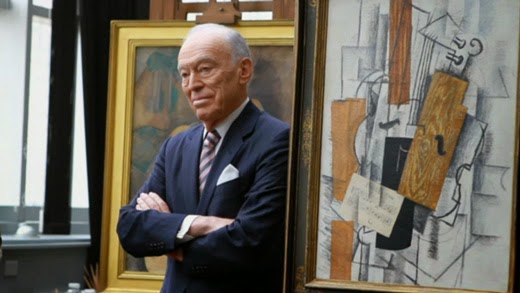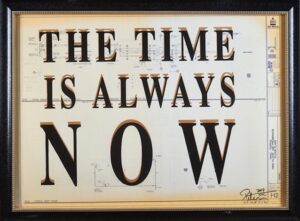We live in a visual age. I wrote a post last year about how aesthetics rule, and that humans are visual thinkers first and foremost: we remember 80% of what we see compared with just 20% of what we read. And, thanks in large part to democratization of design, visual literacy has never been higher. When you hear casual moviegoers waxing rhapsodic about those extended long-takes in Birdman, TV viewers geeking out over a six-minute Steadicam shot in HBO’s True Detective, or consumers getting giggly over the look of the new iPhone, you know that visual literacy is our new, true lingua franca.
It is for these reasons that a recently opened art exhibition in New York City is cause for celebration. In October the Metropolitan Museum of Art opened to the public “Cubism: The Leonard A. Lauder Collection.” I am fortunate to know Leonard Lauder, chairman emeritus of Estée Lauder. This show across seven galleries featuring 81 works collected by Leonard over three decades, explodes the synapses. The New York Times called this exhibition “a transformative gift” and “a sterling act of philanthropy.” It focuses exclusively on a quartet of artists—Pablo Picasso, George Braque, Juan Gris, and Fernand Leger—who all worked in Paris during the first part of the 20th century. Through the early work of these “four horsemen of the Cubist apocalypse” the Leonard Lauder Collection charts the genesis of a watershed movement in modernism that forever changed the way we look at things. (In broad strokes: if impressionism proposes that color and light—rather than line—is the defining element of an object’s form, Cubism tacks the other way, breaking objects up into various planes to suggest how they exist in time.)
Leonard’s gift represents a watershed moment for the nation’s largest art museum, which had for the most part steered clear of modern art, ceding that space to the equally magnificent but very different Museum of Modern Art. Until the 1990s, the Met held no Cubist of proto-Cubist paintings by any of these four artists. The unveiling of the collection also signals high-water marks in the history of arts philanthropy and the generosity of New York’s society set. In the pages of The Economist, gallery owner William Acquavella called the group of Cubist drawings, paintings, and sculptures, “without doubt the most important collection any private person has put together in many, many years.”
It took Leonard, a lifelong New Yorker, over 30 years to build this unparalleled collection. In a short video on the Met’s website, he explains how he’d been bitten early by the collector’s bug: starting at six with his treasured picture postcards of Miami Beach Art Deco hotels, then World War II posters, then Toulouse-Lautrec prints. “I liked the idea of the concept of looking in depth at a moment in history,” he explains about the appeal of Cubism. “It’s a thrill to put together a harmonious collection, because now I have something I can share.”
From the birth of perspective to Impressionism, Cubism, Abstract Expression, Pop Art, and Minimalism, each fresh wave of artistic thinking has taught us more about how to look, and how to digest visual content. The Met’s Leonard A. Lauder Collection helps fill an important gap in the narrative about how our visual thinking has progressed. See it. It’s an infinitely better experience than the new eight-story billboard in Times Square.






